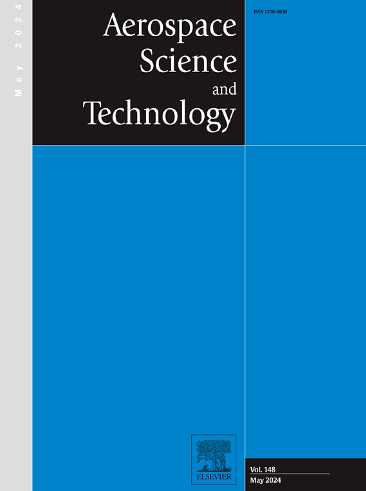带有限热机械传感器的返回舱结构损伤识别模型
IF 5
1区 工程技术
Q1 ENGINEERING, AEROSPACE
引用次数: 0
摘要
返回舱面临极其恶劣的气动压力和加热条件,结构损伤状态的高精度识别对返回舱的飞行和再利用性能评估至关重要。目前的技术主要是基于复杂的数值模拟或间接传感器测量有限节点的时间或空间维度。这项工作开发了一个损伤识别模型,该模型包括数值模拟、传感器测量和额外的机器学习,以获得模块的结构损伤状态。首先,通过热力学数值模拟建立了初级损伤数据库,建立了基于应变等效刚度折减方法的结构损伤模型,该模型具有一定的结构划分规则;其次,提出了一种基于Kriging agent模型的精度更高的数据库扩展方法,将损伤数据库扩展10倍,误差为7%;第三,基于反向传播神经网络,以有限节点温度和应力为输入,以结构损伤值为输出,建立了结构损伤识别模型,最终建立了结构损伤等级评价方程。结果表明,与未扩展的原始数据相比,模型的过拟合得到了充分抑制,识别误差降低了60%,识别精度高达92.6%,误差阈值为0.03,具有良好的抗1%传感器噪声的抗干扰能力。该模型具有较高的结构剩余容量识别效率和准确性,为返回舱实时安全评估提供了潜力。本文章由计算机程序翻译,如有差异,请以英文原文为准。
A structural damage identification model with finite thermomechanical sensors of the re-entry module
The re-entry module encounters extremely harsh aerodynamic pressure and heating conditions, and the high-precision identification of the structural damage state is crucial to the flight and reuse performance evaluation. The current techniques are mainly based on complex numerical simulations or indirect sensor measurements of finite nodes in time or space dimensions, respectively. This work developed a damage identification model that included numerical simulations, sensor measurements, and additional machine learnings to obtain the structural damage state of the module. First, the primary damage database was established by thermomechanical numerical simulations and a structural damage model, which was proposed based on the strain-equivalent-based stiffness reduction method with certain structural partition rules. Second, a database expansion method with higher accuracy based on the Kriging agent model was proposed, the damage database was expanded by 10 times with 7 % error. Third, the damage identification model was developed with inputs of the finite nodal temperature and stress and output of structural damage value based on the back propagation neural network, and a structural damage grade evaluation equation was finally formulated. The result shows that the model overfitting is fully suppressed and the identification error is reduced by 60 % compared with the original data without expansion, and great identification accuracy of 92.6 % with error threshold of 0.03 and good anti-interference ability of 1 % sensor noise are exhibited for the model. The model holds higher recognition efficiency and accuracy of structural residual capacity and indicates potentials for real-time safety assessment of re-entry module.
求助全文
通过发布文献求助,成功后即可免费获取论文全文。
去求助
来源期刊

Aerospace Science and Technology
工程技术-工程:宇航
CiteScore
10.30
自引率
28.60%
发文量
654
审稿时长
54 days
期刊介绍:
Aerospace Science and Technology publishes articles of outstanding scientific quality. Each article is reviewed by two referees. The journal welcomes papers from a wide range of countries. This journal publishes original papers, review articles and short communications related to all fields of aerospace research, fundamental and applied, potential applications of which are clearly related to:
• The design and the manufacture of aircraft, helicopters, missiles, launchers and satellites
• The control of their environment
• The study of various systems they are involved in, as supports or as targets.
Authors are invited to submit papers on new advances in the following topics to aerospace applications:
• Fluid dynamics
• Energetics and propulsion
• Materials and structures
• Flight mechanics
• Navigation, guidance and control
• Acoustics
• Optics
• Electromagnetism and radar
• Signal and image processing
• Information processing
• Data fusion
• Decision aid
• Human behaviour
• Robotics and intelligent systems
• Complex system engineering.
Etc.
 求助内容:
求助内容: 应助结果提醒方式:
应助结果提醒方式:


